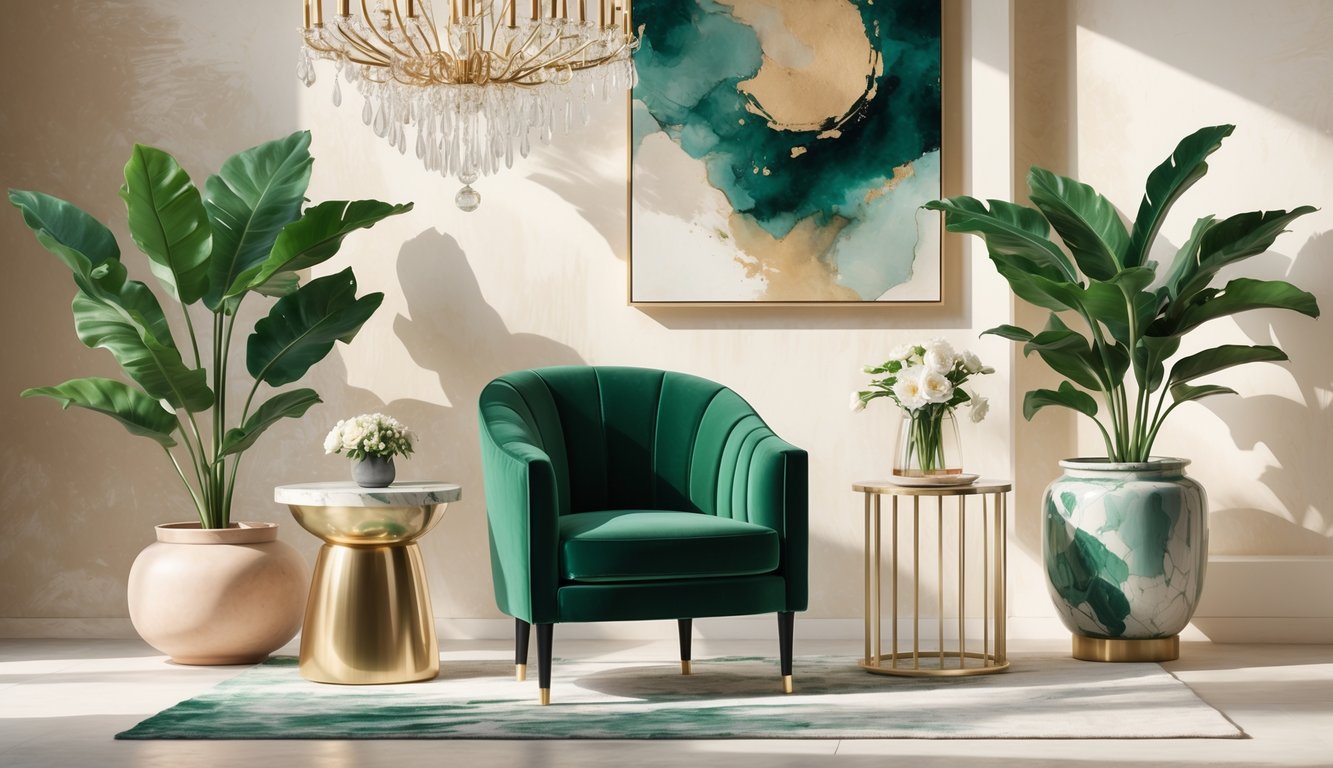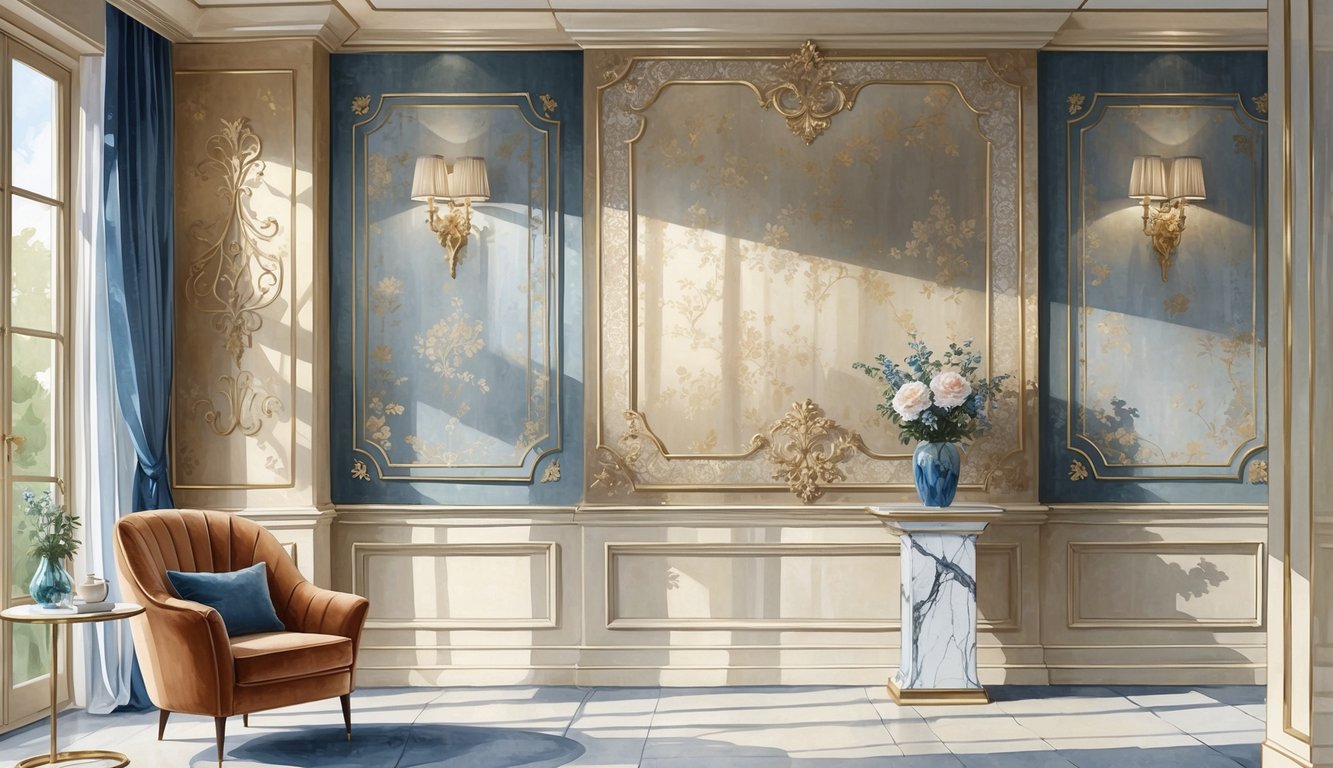
Timeless Texture: Wallpaper and Wall Finishes

Here’s what bugs me: people ignore their walls until someone spends a fortune on them, then suddenly everyone’s a wallpaper expert. “Timeless” finishes? Please. I’ve seen enough “timeless” trends age like milk. Most so-called luxury prints look tired after a few years, and don’t get me started on fake paneling.
Wallpaper as a Design Showstopper
Wallpaper used to mean grandma’s house—faded florals, peeling seams, and maybe a smell you can’t quite identify. But now? Apparently, it’s the new flex. We’re talking silk grasscloth, wild geometric murals, hand-painted de Gournay panels that cost more than my car, and, yes, stuff durable enough to survive a dog with separation anxiety. Designer Sarah Sherman Samuel told AD that clients want more custom, dramatic wall coverings in rooms you’d never expect. I believe it. Nobody talks about the pain of actually installing the stuff. Lining up mural panels? Nightmare. Good luck finding someone who’ll do it right.
Texture’s the new obsession—metallics, grasscloth, weirdly reflective finishes. Just don’t do a whole room in it unless you enjoy living inside a disco ball. Veranda’s 2025 trend report claims bold patterns and luxe materials are up 40%, but half the time, paint sits untouched in “luxury” projects. Here’s my advice: pick something you can actually wipe down if you have people over. Spilled wine happens.
Natural Materials in Wall Treatments
Getting real marble or travertine for a wall isn’t just about money—it’s a logistical circus. Every showroom claims they’ve got exclusive white Carrera, but somehow every fancy entryway looks the same. Real stone makes a room feel like it’s been there forever, which is cool until you need to add an outlet. Then it’s a headache.
Stone’s porous, sure, but fake panels just don’t have the same vibe. I had one client who wanted an onyx accent wall, and the building inspector nearly had a meltdown about code. Still, actual stone wins on resale. Realtors basically drool over it—NAR says 63% of buyers see real stone as a legit luxury upgrade, not just a pretty face.
Stone walls (or polished plaster, which looks amazing until you try to repair it) aren’t just about lasting forever—they’re about status. But your insurance company will absolutely call and ask if it’ll crack during an earthquake. Hot tip: whatever you think installation will cost, double it. The surprise isn’t the stone, it’s the labor bill.
Integrating Vintage and Investment Rugs
Scrolling through auction sites at 1 a.m. looking for rugs is not what I’d call productive. It’s a rabbit hole, and the prices make zero sense. Still, every designer I know swears by “investment” rugs. Apparently, hand-knotted vintage rugs survive kids, pets, and spilled coffee, and they age better than most furniture. I don’t treat my floors like a museum, but I do like the idea that a rug might actually hold its value (or at least not turn into trash after two years).
What Makes a Vintage Rug Valuable
Here’s the part I can’t wrap my head around: how does a rug outlive every sofa I’ve owned and still sell for more? Real vintage (think Persian, Turkish) means natural dyes, hand-knotted wool or silk, and, according to textile expert Tricia Samuels, rugs over 50 years old can appreciate 4% a year if you don’t run them through a wood chipper. Vacuum carefully, no beater bar—learned that the hard way. Designers obsess over kilim and Heriz patterns because the “imperfections” make them look intentional.
Meanwhile, everyone’s fixated on Persian rugs, so the 1940s Indian and Chinese ones get ignored and then quadruple in price when someone finally catches on. Machine-made rugs? Depreciate instantly. I’ve got a “vintage-inspired” rug from a big-box store that basically started shedding before I even unrolled it.
Styling Rugs Across Different Rooms
You’d think it’s easy—throw down a rug, done. Nope. Kitchens and playrooms? I watched a designer put a faded Bokhara next to a marble island and call it “splash-prone art.” I tried it. Turns out, low pile is your friend. TikTok cleaning hacks actually helped here. Bedrooms? Thick Moroccan Beni Ourain, if you like stepping onto something soft at 6 a.m.—designer Christa Okeefe swears by them for allergies, but my cat disagrees.
Pattern mixing? Disaster, until I realized hallway runners need to be 28-32 inches wide or they look like afterthoughts. Living rooms will swallow smaller rugs—layer a 9×12 under everything or don’t bother. A good antique rug in the entryway somehow makes my pile of shoes look curated. Open plan? Designer Tessa Riley’s “three-rug rule” is chaotic but works. I don’t know why. It just does.